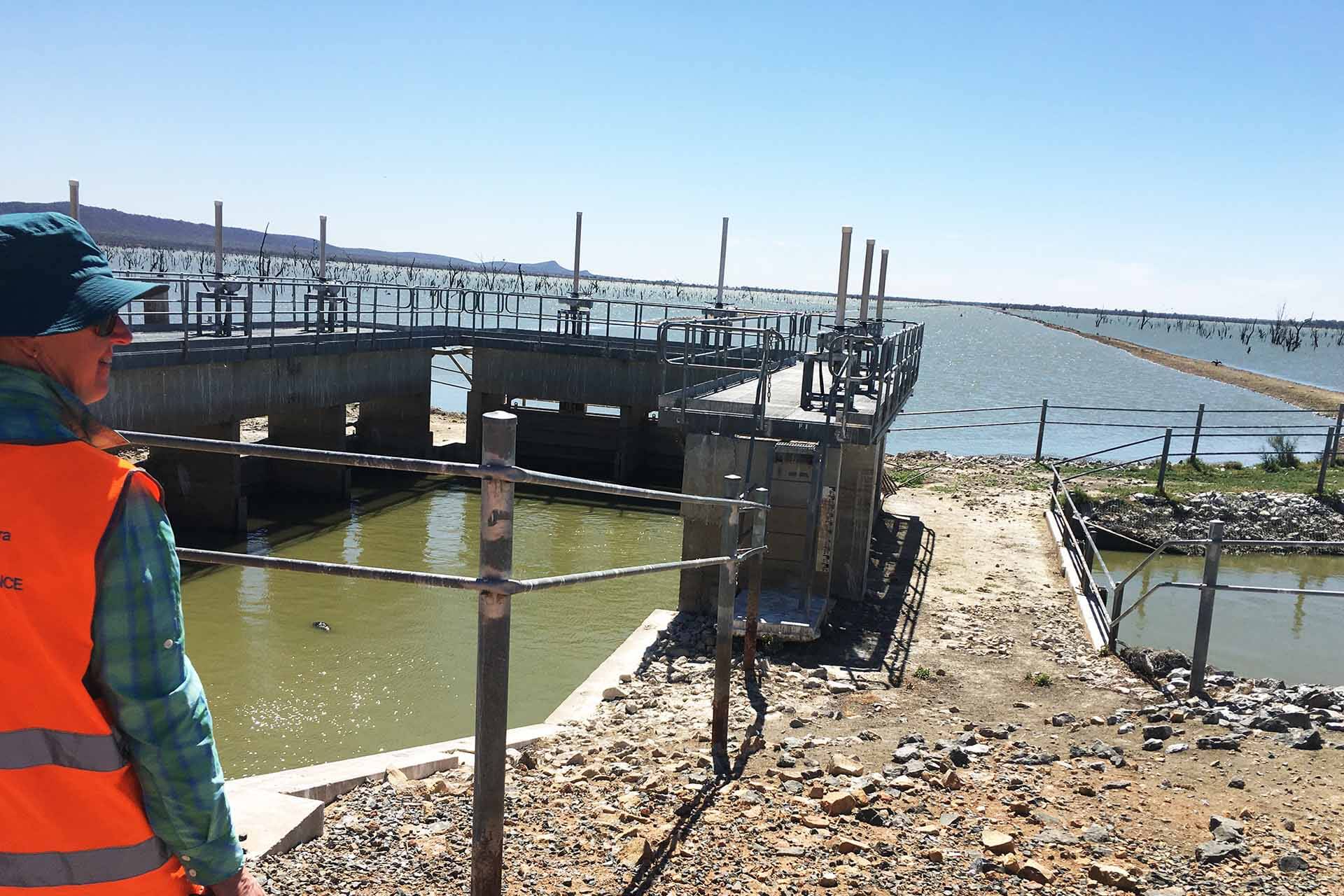The Lachlan Environmental Water Advisory Group met at Lake Cargelligo in March 2025. The meeting included a field trip to Lake Brewster.
2024–25 Environmental water actions to date and outcomes
Environmental water managers reported the outcomes of a multi-site watering, including a spring native fish nesting and dispersal flow. This environmental water delivery aimed to provide stable flows in the mid- and lower-Lachlan to optimise Murray cod nesting and spawning conditions when the river temperatures reached a suitable 19 degrees Celsius. The flow was also designed to maximise the movement of Murray cod larvae and juveniles. A total of 32,300 megalitres of water was used.
Four fortnightly larval fish sampling trips targeting Murray cod larvae were undertaken between late October and early December 2024. The first sampling at the end of October recorded the most Murray cod larvae. Based this trip, abundances were higher than in previous years.
The multi-site watering provided additional benefits, including greater connectivity downstream to the Great Cumbung Swamp. The group discussed what could be learned from the event, including event timing and flow rates. Group members also discussed the summer refuge flow.
Greater Cumbung Region Water Management Plan update
The Greater Cumbung Region Water Management Plan outlines the water management strategies and ecological objectives for the Greater Cumbung region in the Lachlan Valley. The plan focuses on managing common reed marshland and southern bell frog communities, as well as river red gum forest-woodland wetlands, floodplain connectivity, and waterbirds like Australasian bittern and painted snipe.
The main goals are to maintain the local population of the southern bell frog by providing refuge habitat and breeding opportunities, and to keep common reed beds in good condition to support waterbirds and other wildlife.
The plan details various flow events with specific volumes and durations, including end-of-system flows, dry weather environmental flows, and native fish flows. An audit of existing infrastructure has also been completed, with upgrades and repairs to priority works and updates to the hydraulic model underway.
Future actions include overlaying new spatial data to refine management strategies and conducting up to 2 watering actions per year to expand or rotate areas and sites. Success will be measured by monitoring southern bell frog populations through acoustic recordings and ground surveys, and assessing the percentage cover of common reed beds using annual drone transects.
The plan includes small-scale priority works and technical updates to support water management decisions, and the development of an infrastructure investment prospectus.
Looking ahead
Environmental Water Advisory Group members discussed future environmental water deliveries for the remainder of the 2024–25 water year and potential actions for 2025–26. Key points included:
- Jemalong flow: Starting in late April, this flow aims to continue the rehabilitation and recovery of wetland areas, including some previously degraded sites.
- Cumbung flow: This could occur in 2 phases. The first phase involves winter flows to maintain permanent water habitats for the southern bell frog and prime areas, contingent on completing infrastructure works at Toopuntul. The second phase, a spring/summer flow, aims to support southern bell frog, waterbirds, vegetation outcomes, and benefit native fish in the Lachlan River.
- Willandra Creek flow: This is being considered in partnership with a replenishment flow and would likely start in May/early June, subject to approvals.
- Additional actions for the coming year may include aquatic species refuge contingencies.
